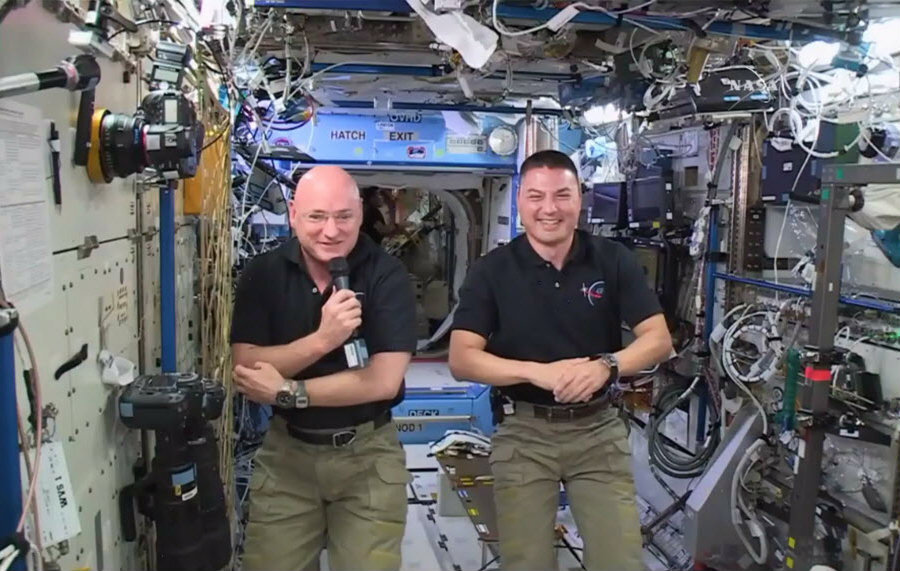Sneak peek: ‘The Martian’ premieres on space station
Loading...
“The Martian” doesn’t hit theaters on Earth until October, but the upcoming film has already made its premiere – in space.
Astronauts aboard the International Space Station were treated over the weekend to a special screening of the film, based on a novel by Andy Weir, about a man stranded on Mars and his colleagues’ efforts to bring him home. The screening was part of a push by NASA to link the science and strategy portrayed in the movie, which is set in the near future, with real life projects underway in Houston.
"It really highlights a lot of things that we work on," Ellen Ochoa, director of the Johnson Space Center and a former astronaut, said of the technology portrayed in the film. Among them: how to devise ways to safely land objects on the surface of Mars and create a closed-loop life support system.
Indeed, preparations for a manned mission to Mars by the 2030s are proceeding as planned, NASA says. These include development of the Orion capsule and the Space Launch System (SLS) megarocket – which are scheduled for their first joint, unmanned test flight in 2018 – to help get astronauts to destinations in deep-space, Space.com reports.
Astronauts on the ISS have also experimented on the production of food crops away from Earth, growing and eating lettuce raised on the space station. In addition, NASA astronaut Scott Kelly and cosmonaut Mikhail Kornienko are on a year-long mission to characterize the psychological and physiological effects of long-duration spaceflight – critical to the Mars missions, which could keep astronauts away from Earth for 500 days or more.
"We are farther down the path to sending humans to Mars than at any point in NASA's history," NASA Administrator Charles Bolden, a former space shuttle commander, told reporters last week.
That doesn’t mean we’re ready for a trip to the Red Planet just yet, however. Even Mr. Weir’s novel, lauded for its its scientific details and imagined ways a stranded astronaut might grow food on the Martian surface, is still only "one version" of what a manned mission to the Red Planet could look like, officials said – and there are parts of Weir's story that remain closer to science fiction than fact.
“The reality is even if all those technologies were ready, if they were magically ready tomorrow, we would be a no-go for launch," Camille Alleyne, an assistant program scientist working on the International Space Station Program, told the Associated Press. "Because the human body is not yet ready for us to go to Mars."
Budget is also an issue: “For a Mars mission, [NASA] would need an estimated $80 to $100 billion over the next 20 years, which Congress so far has refused to authorize,” Wired reports.
The agency is hoping “The Martian” – like “Apollo 13” and “2001: A Space Odyssey” before it – will generate renewed interest in its space programs.
“NASA really likes the book,” Weir told Wired. “They see it as an opportunity to reengage the public with space travel.”
"It helps the public feel the excitement that we feel," astronaut Rex Walheim, who flew the final space shuttle mission, and is chief of the Exploration Branch of the Astronaut Office, told the AP. "For two hours they get to sit in a theater and see the excitement of space flight. But this is something that we get to live."
“The Martian,” which stars Matt Damon and is directed by Ridley Scott, opens in theaters Oct. 2.
This report contains material from The Associated Press.






